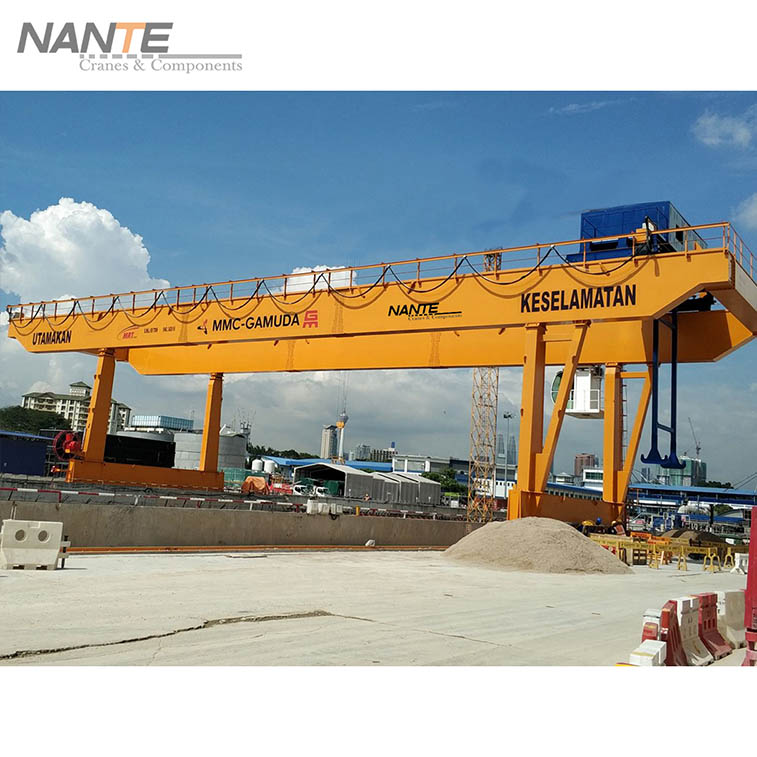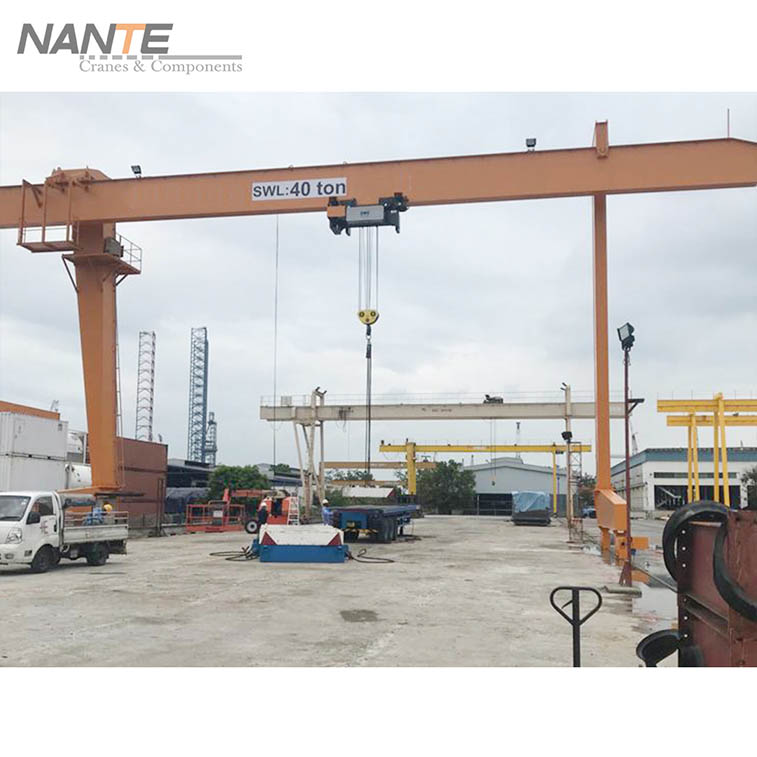Building a Gantry Crane
Date: 2024-01-31 Share:
Components of a Gantry Crane
Crane components are integral to the efficient operation of lifting equipment. They include the hoisting mechanism that raises and lowers the load, the traveling mechanism that moves the crane along the track, and the mobile power supply that powers the crane’s systems. Crane control and safety components ensure the safety of operators and pedestrians, while rails and accessories complete the crane’s functionality. These components work in conjunction with each other to achieve a wide range of lifting capacities, making the crane an essential tool for a range of industrial applications.

Constructing a Gantry Crane: Step-By-Step Tutorial
The Installation Steps:
Gantry Crane Outrigger Installation
With the help of car crane, place the dolly floor grider on the baseline of the floor crane track, adjust the distance, and fasten the floor grider dolly.
After lifting, tilt the outrigger axis to meet the design requirements.
Adjust the relative position of the outriggers so that the alignment and perpendicularity of the outriggers and the lower grider are in accordance with the design.
Stabilize the outriggers. After the outriggers and lower griders are installed, it is necessary to stabilize the outriggers and lower griders with cable or auxiliary support.
Gantry Crane Main Grider Installation
Before carrying out the main girder lifting, according to the actual measurement, in the working radius of the car crane to produce two car crane stationary parts, so that the two main girders run as close as possible to the ground grider.
Check the machineries, arrange, connect, bundle, and other tools.
Raise the main girder 1-2m from the ground when hanging in the air for more than 5 minutes to confirm that there is no error before continuing to hoist, while lifting the height of the two major lifting jibs, so that the main girder can be docked to the outriggers.
Two gantry cranes used to support lifting need to work under the command of the same person.
Raise the main grider to a height of 0.5-1m above the outrigger, adjust roughly can and the outrigger connecting flange at the relative, and then slowly the main grider down, to the flange on the outrigger and in the flange bolts inserted diagonal pins guided, adjust the position, and finally make the main grider fall on the top of the outrigger.
The connecting bolts will be installed with a torque wrench and fixed.
With the help of a truck crane, the main grider arch will be lifted and installed at the flanges of the two main griders in a manner similar to the previous installation of the main grider.
Check and measure the installation accuracy by instrumentation, and adjust the place that meets the requirements until it meets the design requirements.
Remove the outrigger stabilizers.
Gantry crane trolley installation
Choose a suitable working position of the truck crane to facilitate the installation of the trolley.
Lift the trolley up and away from the support 1-2m, check whether the trolley is to reach a horizontal state, confirm that the crane spreader hitch is tight, continue lifting and installation.
When the trolley rises and falls to a suitable height, then rotate the truck crane, so that the trolley is located above the main grider, roughly aligned with the trolley track, and then slowly descend, and finally aligned with the trolley track and position it well.
The above are the steps of gantry crane installation, there are also many details of the work, such as crane mechanical parts of the debugging, crane electrical parts of the debugging work. Special note: cranes belong to special equipment, the installation of gantry cranes also need to be installed by professionals, it is strictly prohibited to arbitrarily arrange for the installation of personnel.

Safety Measures for Building Gantry Crane:
When dealing with heavy machinery, safety should be your top concern. Let’s learn about some basic preventive measures.
Understanding load limitations
Each crane has a specific load limit based on its design and components. Never exceed this limit. Overloading may cause crane malfunctions and serious accidents.
Regular inspection and maintenance
Ensure that your crane is always in optimal working condition through regular inspections and maintenance. This includes checking the wear and tear of all components, especially load-bearing components such as cranes, griders, and casters.
Appropriate training
Anyone operating a crane should receive sufficient training. This training should cover all aspects of crane operation, including lifting and moving loads, as well as emergency procedures.
Conclusion
Building a gantry crane may seem daunting at first, but understanding the interplay between its various components will take the mystery out of the process. Every decision – from choosing the type of crane and frame material to picking out the beams, crane, trolley, and casters – is part of a larger blueprint that will ultimately result in a sturdy and valuable tool that can fulfill your needs for years to come.
 English
English






